Saoirse has recently talked to Deadline about the parallels between between the life of her character, Eilis Lacey, in ‘Brooklyn’, and her own. A new portrait was released with the article, and we have added it to our photo gallery.
How did you get involved with this project?
I heard about it over two years ago now—I had read the book years before that when I was in my mid-teens. I really loved Colm Toibin’s writings, especially of women anyway. The script just came to me—it was Nick Hornby, so of course, you’re immediately interested. I knew this was the first Irish project that I wanted to do. It was really important for me to find the right first one, and it would have to be strong and mean something to me. A couple of weeks after that, John (Crowley) flew over to Dublin to meet me, and we chatted about it in relation to his life and moving away from home, and I was just about to move away from home, so I had no idea how much the story was going to resonate with me when I did make that trip. It’s been one of those things that, to this day, has just become more and more personal as it’s gone on.
You were born in New York and raised in Ireland. Was that personal connection to the film purely coincidental?
It was absolutely coincidental, but initially that was the attraction for me, apart from everyone who was involved. The two locations that make up the film are the two locations that make up me, and so it was personal straightaway, just because mom and dad had made such a similar journey, and so many people have. I think that’s where the real responsibility came from. It’s that you knew you were representing millions of stories, whether they were Irish or not.
By the time we made the film, I had moved to London and so I was really homesick. It was the first time that I’ve ever experienced playing a character whose emotional journey was running parallel to mine, and that was really different for me. With something like this, you may think it would be easier because it’s a similar kind of story to your own, or the feeling of it is, but actually I found it a lot more challenging. There’s kind of nothing to hide behind.
Now that you’ve made your first Irish film, do you have a strong desire to keep telling Irish stories, or to work with other native artists?
I am very proud to be Irish, and so it’s always been important for me to be able to celebrate that through stories. It’s exciting when a project like this comes along where it’s not stereotyping Ireland, not turning us into a joke or anything. It’s an intelligent piece of writing, and we had an incredibly intelligent director, who is Irish. Also, it’s important for me that the Irish crews at home get work because they’re so brilliant. They’re some of the best crews I’ve ever worked with.
What was your collaboration like with John Crowley?
We were together for pretty much every single shot of the film. We’ve very much been on this journey together. I don’t know whether it’s the fact that he’s done so much theater work in the past, but he’s incredibly specific when it comes to the emotional beats of every scene. I’d love to work with him on a play—to see him in that kind of atmosphere.
We’re really close, and (the story) is a huge part of not only our family history, but what we’ve gone through ourselves. There were moments during the shoot where we would look at each other, and regardless of what happened to the film afterwards, we knew that this was something that was very special to us. That bond was always there.
Was there a rehearsal process on the film?
Yeah, it was actually two weeks. We did a week in London to begin with, because a lot of the Irish cast lived over there, and then we went to Ireland for the second week, and we did our read through there. Emory (Cohen) came in for the second week of rehearsal in Dublin. And then we went down to Wexford, Enniscorthy and shot there for a couple weeks.
You had two romantic leads in this film—Emory Cohen and fellow Irishman Domnhall Gleason. What was that like?
I knew Domhnall before. There were a few things we were trying to work on together and didn’t get around to, and also the community back home is so small that you kind of know everyone anyway. I think he was cast just after me, so I was delighted that he was doing it.The first time I met Emory was during rehearsals. They didn’t do chemistry reads or any of that stuff, so it was one of those things where it kind of just had to work, and it did. When it comes to being on set, Domhnall and I work in a more similar way, but with Emory and me, we work in very different ways. He does an awful lot of preparation for a role, and I don’t. Now I do, but I focus on the script and I don’t break anything down, whereas he tends to do that a bit more. It was great, ultimately, to have that yin and yang dynamic between us because the two characters, they needed to be different and they needed to bounce off of each other and could be attracted to each other because of that difference.
Was there a day or scene that was more challenging than others to shoot?They were all pretty challenging. We had so much to do every day; we had 35 days to shoot everything. We would probably do two or three big, heavy scenes per day, which is a lot. I think even though they were great fun, all the stuff from the boarding house, you had to kind of squeeze that into two days to get all the dinner scenes done, and there are about eight dinner scenes. It was amazing, but it was it was tricky.
In Enniscorthy (Ireland), it was mad because that’s where we began the shoot, so we were still finding our feet. Locals would come out every single day to watch us work, so we’d have 50 to 100 people—which is a lot for Enniscorthy—on the side of the road watching us and looking out their windows when we were shooting. They were so excited that we were all there, but that was pretty intense because you were telling their story and they were there watching it happen. With the whole thing there was no letup. But we knew (the film) was something that was special to us, so that was what got us through it. By the end it just felt like we were running a marathon.
You have several close-ups in the film that convey a lot, like in the Christmas scene. Did you work with Crowley on those or work instinctively?
It’s a combination of both. At that stage we were shooting in Montreal, so we were about five weeks in and had found our rhythm. John and I knew how the other one worked and were very much a team. He was always the leader and so any notes he would have, of course, I would go with them. With a scene like that, again, it represents the struggle that a lot of immigrants go through when they make it to America, and it doesn’t necessarily result in the American dreams that everyone’s been brought up on, and it’s showing the other side of that, and so it was sad and it was heartbreaking.
But when (singer) Iarla O’Lionaird, who is famous back home, gets up to sing (in the scene)—that was something. We were all away from home, the hair and makeup girls, the crew. For all of us to be there on this film—to be tired and just trying to make sure we got everything in the one day—and then have him singing in the middle of it, just silenced us. It was overwhelming. It was easy to get into that space.
What can you tell us about Loving Vincent and The Seagull, which you’re starring in next?
Loving Vincent I only starred on for a couple days, but yeah it’s amazing. It’s basically a story about a young man living in France who becomes fascinated with Vincent Van Gogh’s story and wants to know what his life was like, what led up to his death and what really happened to him. It was shot live-action, but it’s going to be hand-painted by professional painters—people who have masters in the Van Gogh style. Every single frame is going to be shown through a painting in his own style, and the character that I play is called Margaret Gachet, who supposedly had a relationship with him right before he passed away. Her character is based off of a painting that he did of her playing the piano, and all of the characters are parts of his portfolio, so that’s exciting.
The Seagull is Chekhov, obviously, and has a great cast—Annette Bening, Brian Dennehy, (Elisabeth) Moss, Billy Howle, who is a new English actor, and Corey Stoll. We don’t know when that’s going to come out yet. We only shot it over the summer, so we’ll see.
The next thing I’m doing is The Crucible on Broadway. That’s starting next year, so I’ll be doing that the first half of the year.

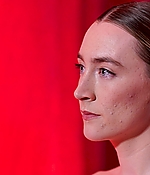

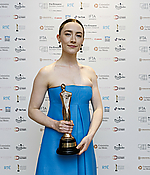
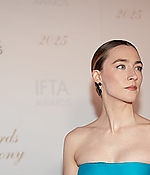

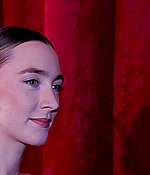
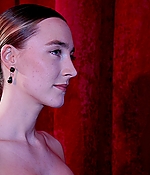
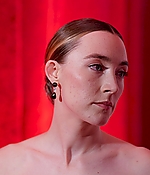

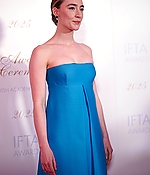


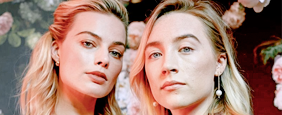
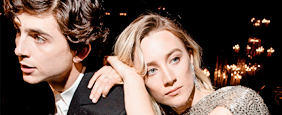







Fantastic interview, I am curious if anyone else has a good enough inner ear to imagine Ms. Ronan speaking all of these interview lines? At any rate , I could “hear” her pretty well !!